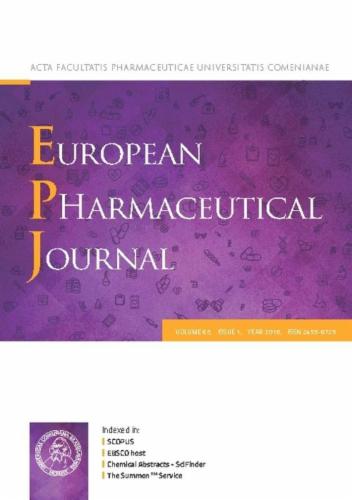A story of falsification and authentication: Authenticity control of phytopharmaceuticals and herbal remedies
IF 4.3
3区 医学
Q1 PHARMACOLOGY & PHARMACY
引用次数: 0
Abstract
Natural remedies and phytopharmaceuticals are gaining popularity among both consumers and patients who seek a healthier and more environmentally friendly lifestyle. Healthcare professionals are also increasingly incorporating phytopharmaceuticals into therapeutic practices, recognizing their potential benefits for overall health and well-being. This trend is further driven by a growing distrust of synthetic compounds and dissatisfaction with conventional medical treatments, prompting many patients to explore natural alternatives. As a result, the demand for phytopharmaceuticals, essential oils, and nutraceuticals continues to rise steadily.
However, falsified natural remedies can pose serious risks to human health, making quality assurance a critical priority. Sophisticated and reliable analytical strategies are essential to ensure product authenticity and to protect consumers and patients from potentially harmful adulteration.
This review provides an overview of documented cases of adulteration and the corresponding countermeasures developed to detect such incidents. Commonly used analytical techniques for authenticity verification of phytopharmaceuticals, essential oils, and other natural remedies are presented. The review discusses the application of spectroscopic methods, mass spectrometry, chromatographic separation techniques, and DNA-based profiling, with reference to current scientific literature. In addition, selected chemometric tools are introduced to illustrate how meaningful information can be extracted from complex analytical data. The potential of multidimensional data analysis, combining complementary insights from various analytical platforms, is also explored. Finally, key considerations for generating and analysing reliable data are highlighted.

伪造和鉴定的故事:植物药和草药的真实性控制。
自然疗法和植物药物在寻求更健康、更环保生活方式的消费者和患者中越来越受欢迎。医疗保健专业人员也越来越多地将植物药物纳入治疗实践,认识到它们对整体健康和福祉的潜在益处。对合成化合物的不信任和对传统医学治疗的不满进一步推动了这一趋势,促使许多患者探索天然替代品。因此,对植物药、精油和营养保健品的需求继续稳步上升。然而,伪造的自然疗法可能对人类健康构成严重风险,因此质量保证是一个关键的优先事项。复杂和可靠的分析策略对于确保产品的真实性和保护消费者和患者免受潜在有害掺假至关重要。本综述概述了记录在案的掺假案例以及为检测此类事件而制定的相应对策。常用的分析技术的真实性验证的植物药,精油,和其他自然疗法提出。综述了光谱方法、质谱法、色谱分离技术和dna分析的应用,并参考了目前的科学文献。此外,还介绍了一些化学计量工具,以说明如何从复杂的分析数据中提取有意义的信息。多维数据分析的潜力,结合各种分析平台的互补见解,也进行了探讨。最后,强调了生成和分析可靠数据的关键考虑因素。
本文章由计算机程序翻译,如有差异,请以英文原文为准。
求助全文
约1分钟内获得全文
求助全文
来源期刊
CiteScore
9.60
自引率
2.20%
发文量
248
审稿时长
50 days
期刊介绍:
The journal publishes research articles, review articles and scientific commentaries on all aspects of the pharmaceutical sciences with emphasis on conceptual novelty and scientific quality. The Editors welcome articles in this multidisciplinary field, with a focus on topics relevant for drug discovery and development.
More specifically, the Journal publishes reports on medicinal chemistry, pharmacology, drug absorption and metabolism, pharmacokinetics and pharmacodynamics, pharmaceutical and biomedical analysis, drug delivery (including gene delivery), drug targeting, pharmaceutical technology, pharmaceutical biotechnology and clinical drug evaluation. The journal will typically not give priority to manuscripts focusing primarily on organic synthesis, natural products, adaptation of analytical approaches, or discussions pertaining to drug policy making.
Scientific commentaries and review articles are generally by invitation only or by consent of the Editors. Proceedings of scientific meetings may be published as special issues or supplements to the Journal.

 求助内容:
求助内容: 应助结果提醒方式:
应助结果提醒方式:


